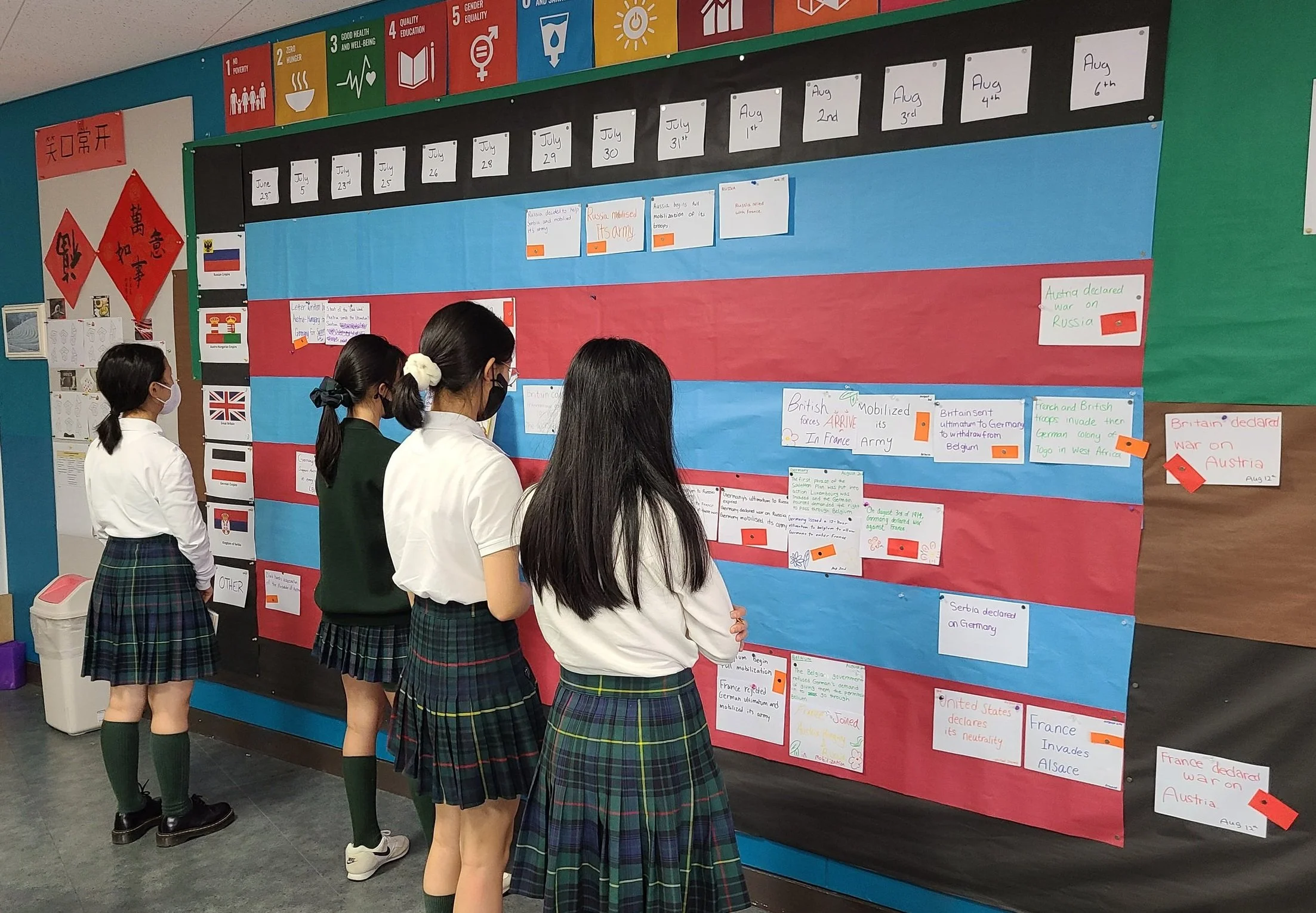G8: Interactive Timeline
Relevance continues to be an issue with my middle school students, one that my grade 8 partner teacher and I have decided to focus on developing.
This is our third year teaching a unit on the First World War together, and this year we wanted an activity that would really help students see and understand cause and effect while also helping them make those important decisions regarding relevance. My partner teacher initially told me that in the spur of the moment, he ended up creating this grid on his whiteboard. As a class, they went through our context-reading in order to outline the major events of the July Crisis of 1914. I looked at his sample and thought: I really like that, but I don’t quite have the same board space and I currently have most of the lowest EAL students in the grade. So, how can I make this more interactive?
This was the result:
I created this calendar-like table on the back wall of my classroom and then divided up my class into six groups. Each group was assigned 3-4 days according to main events from the July Crisis. They had to write down any actions that countries took on a half sheet of paper. As seen in the image, this could be “Serbia declares war on Germany” or “Serbia rejected the Austrian Ultimatum.” The goal was to focus solely on the action and to write nice and clearly to be seen from far away. Once the actions were complete, students pinned them into the appropriate row (The 5 most active countries had their own row to help identify their actions in comparison to other parties).
Once all of the actions that they identified were complete, we went through it as a class and used coloured strips of paper to label the actions. Orange meant a country was acting aggressively and red symbolized a declaration of war. We had a few disagreements but overall good discussion on what symbolized as “aggressive.” The end result looked like the image below:
What I most liked about this was the ownership the students had in completing the timeline as well as the ease in which we could talk about cause and effect. Students were able to see how the actions of one country led inadvertently to the actions of another and used that to help them decide on the importance and relevance of different actions.
Most definitely a technique and activity that I look forward to using again in the future.

